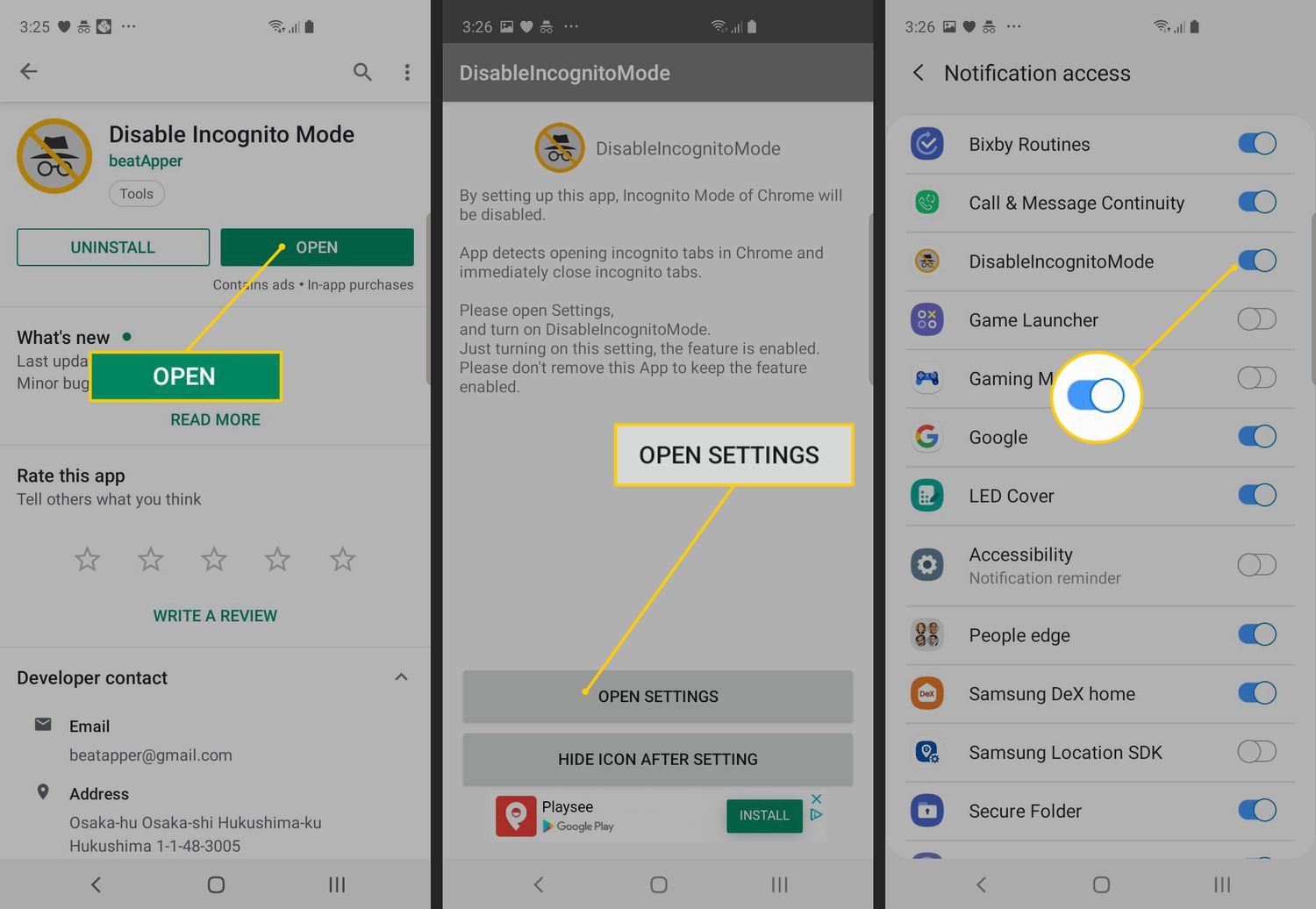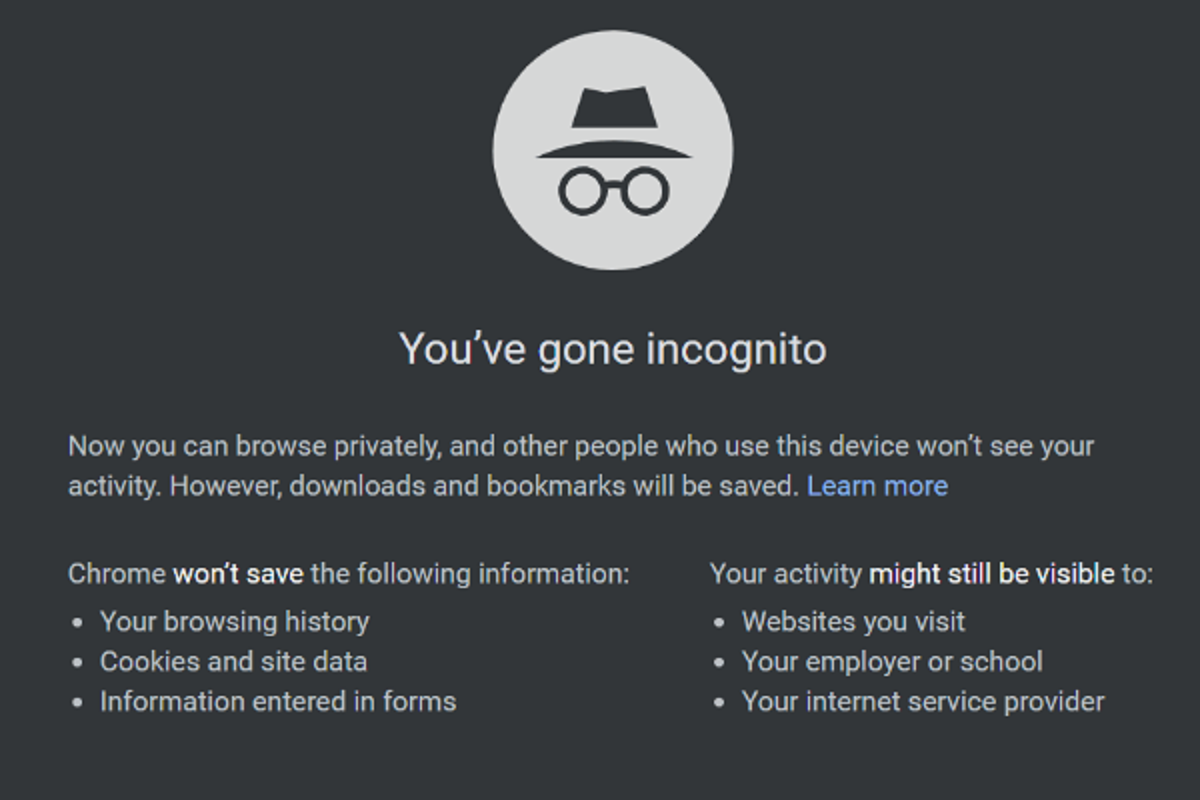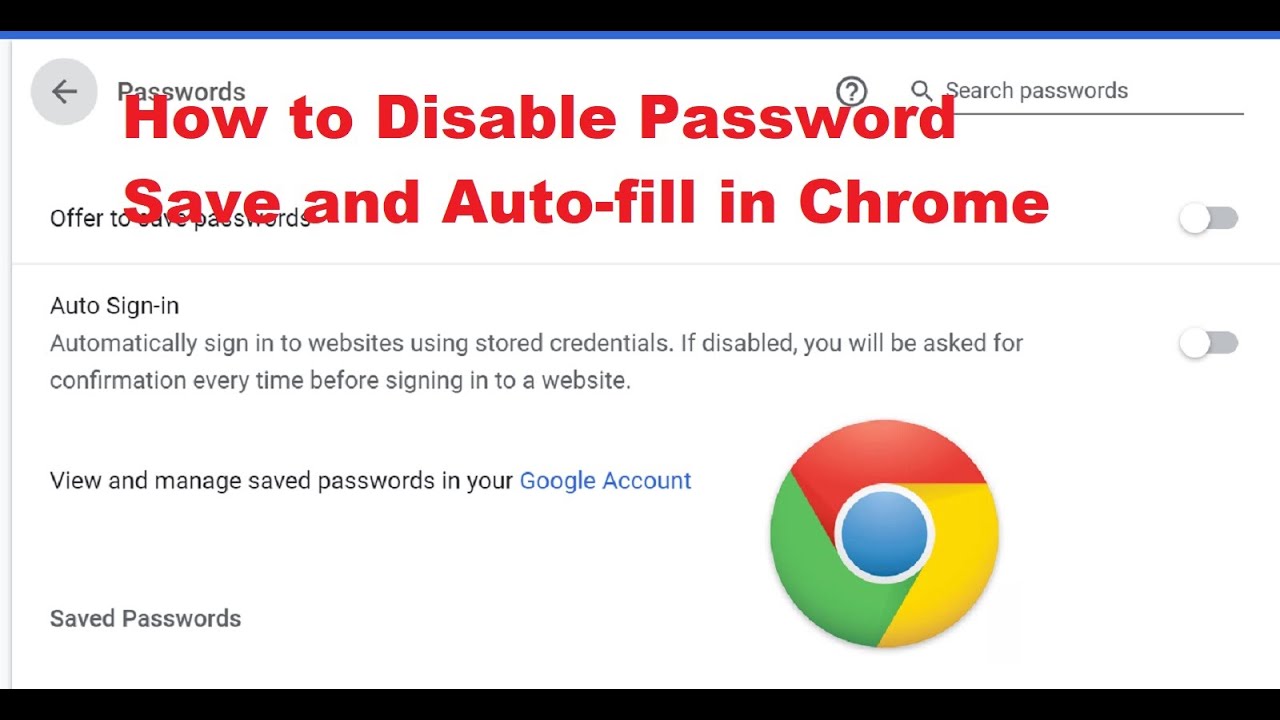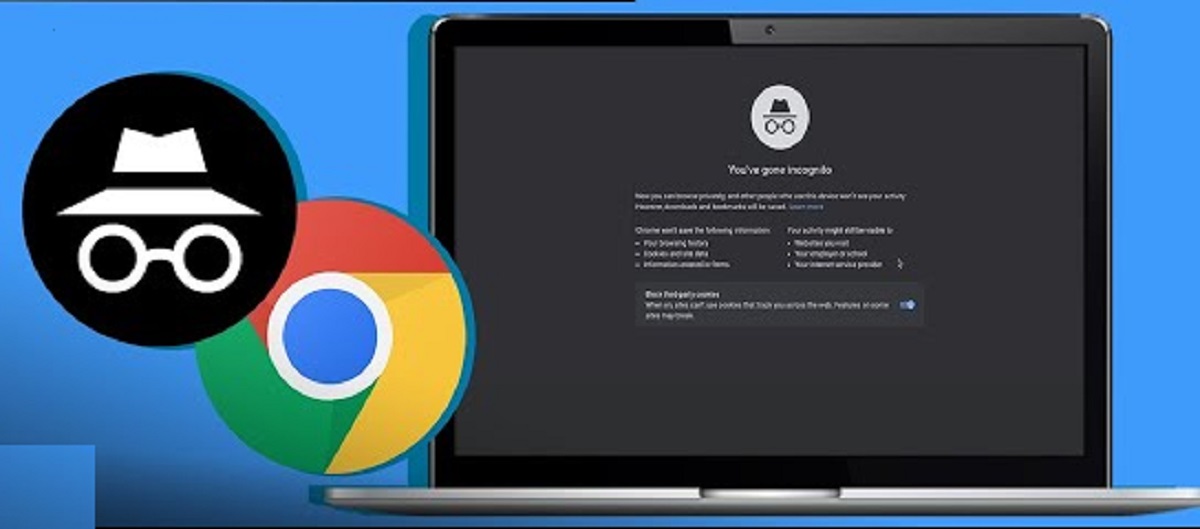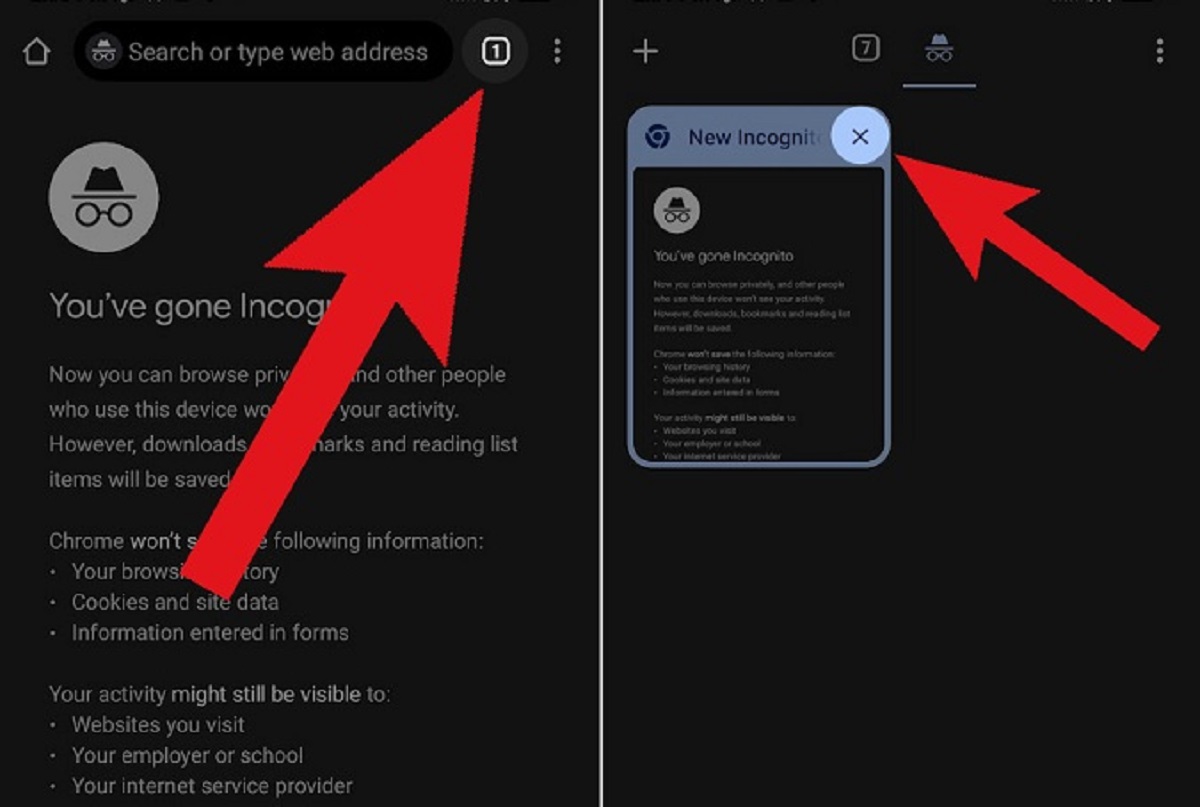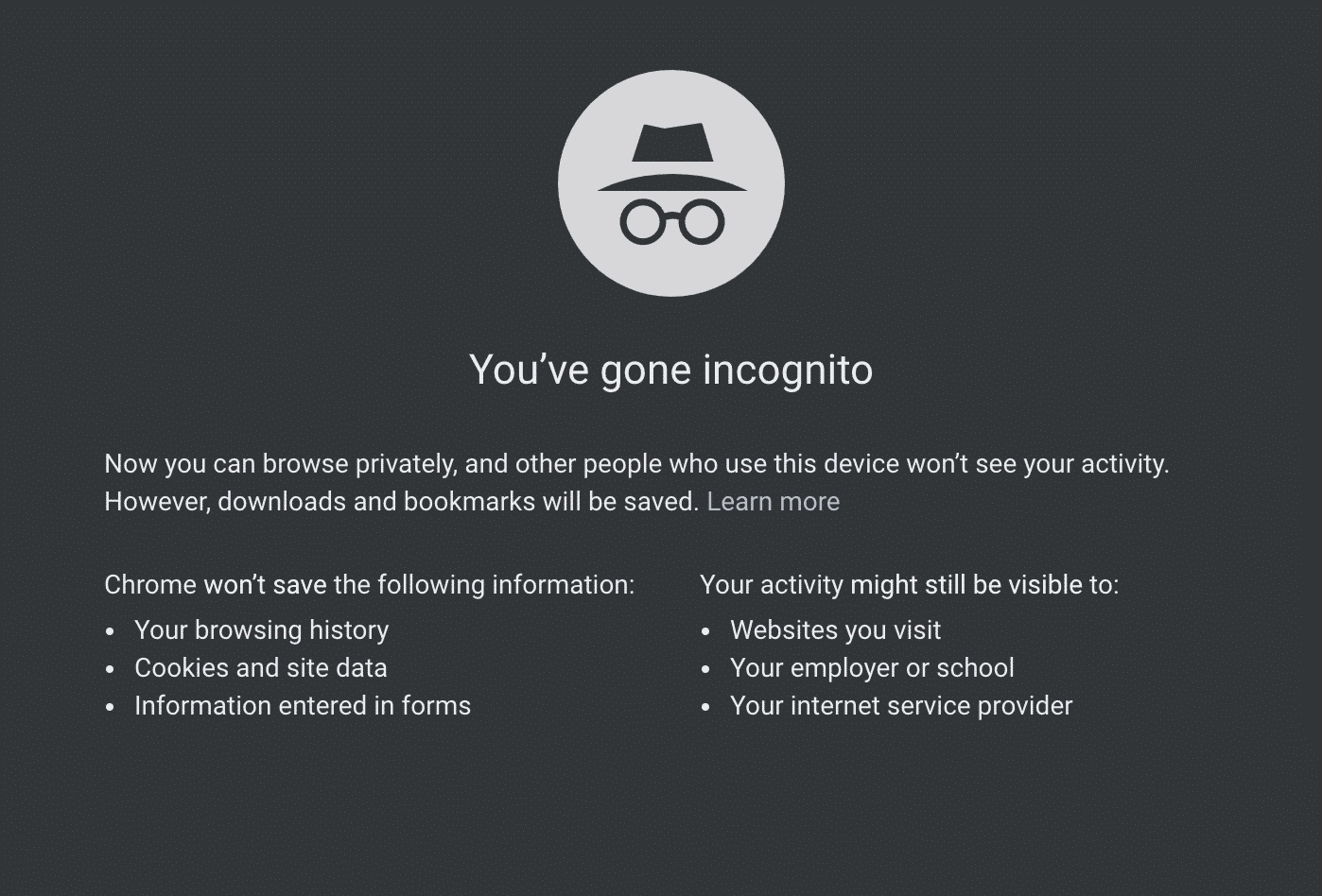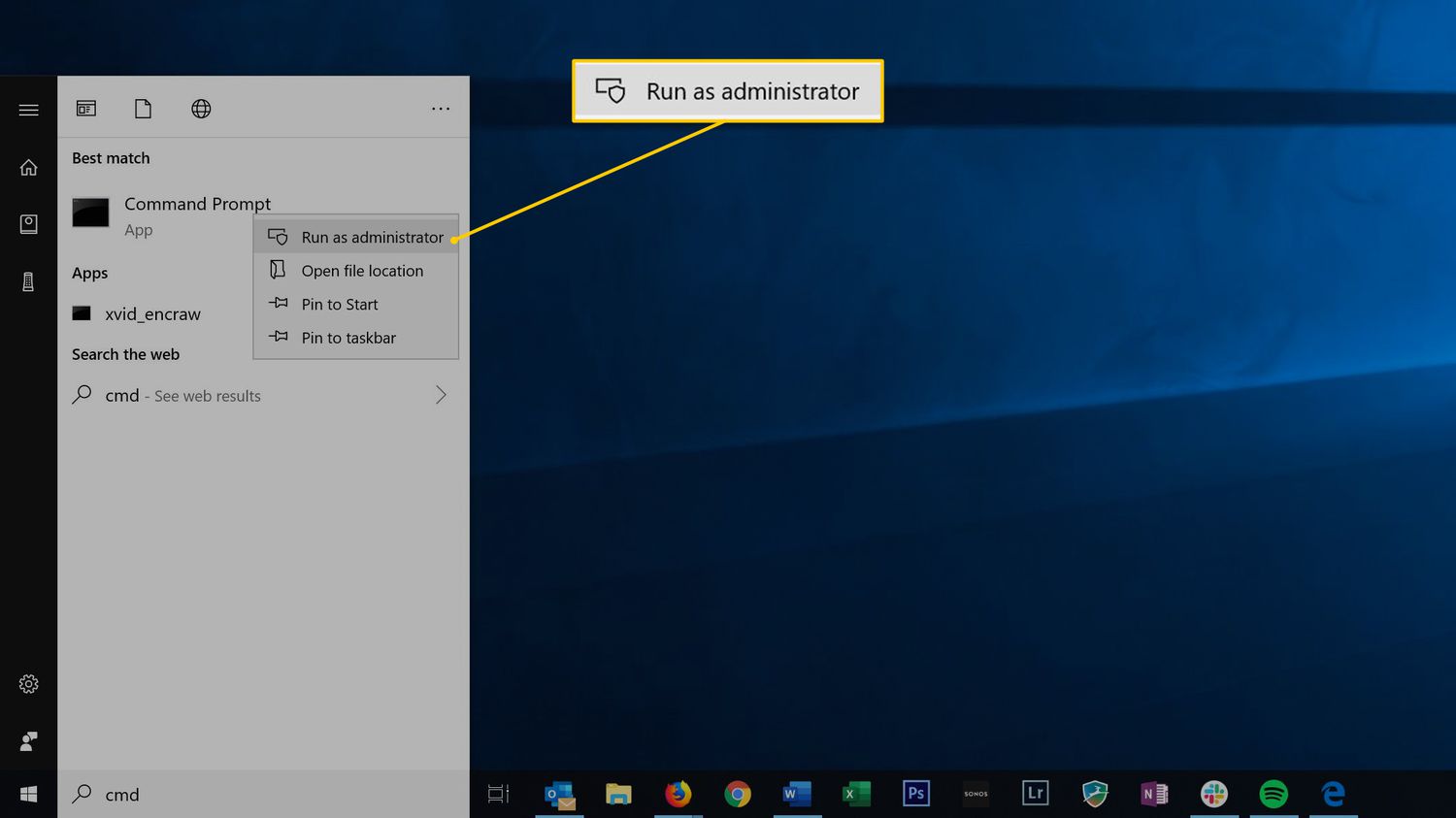Introduction
Incognito mode, also known as private browsing, is a popular feature in web browsers like Google Chrome. When enabled, it allows users to browse the internet without leaving any trace of their activities on the device. While this feature offers privacy and anonymity to users, there may be situations where you want to disable it.
In this article, we will explore various methods to disable incognito mode in Google Chrome. Whether you’re a parent who wants to restrict access to certain websites for your children, an organization looking to enforce internet usage policies, or simply want to prevent users from browsing privately, these methods will help you achieve your desired outcome.
It is important to note that the methods discussed in this article are intended for informational purposes only. Disabling incognito mode may have legal implications depending on your jurisdiction, so ensure that you adhere to applicable laws and regulations.
Now, let’s delve into the different methods you can use to disable incognito mode in Google Chrome.
Why Disable Incognito Mode?
While incognito mode in Google Chrome can be a useful tool for maintaining privacy while browsing the internet, there are several reasons why you might want to disable it:
- Content Filtering: If you are a parent or a guardian responsible for managing internet access for minors, disabling incognito mode can help you ensure that they are not accessing inappropriate content or engaging in activities that may pose a risk to their safety.
- Employee Monitoring: In a work environment, disabling incognito mode can be beneficial for employers who wish to monitor and control the browsing activities of their employees. It helps ensure that the company’s resources are being used for productive purposes and prevents unauthorized access to sensitive information.
- Regulatory Compliance: Certain industries, such as finance and healthcare, are subject to strict regulations regarding data privacy and security. Disabling incognito mode can help organizations meet compliance requirements by preventing the use of private browsing modes that circumvent monitoring and data logging.
- Preventing Malicious Activities: Incognito mode can be used to bypass websites’ restrictions, such as paywalls or limited access to content. By disabling incognito mode, website owners can prevent users from accessing their content without proper authorization or payment.
- Protecting Intellectual Property: Companies that rely heavily on intellectual property, such as media organizations or software developers, may want to disable incognito mode to prevent unauthorized sharing or downloading of copyrighted materials.
While it is important to respect individuals’ privacy, there are legitimate reasons to disable incognito mode in certain situations. However, it is essential to strike a balance between privacy and monitoring to ensure that the rights and responsibilities of all parties involved are respected.
Method 1: Using Registry Editor (Windows)
One of the methods to disable incognito mode in Google Chrome on Windows is by using the Registry Editor. Please note that modifying the registry can have serious consequences if done incorrectly, so it is crucial to follow these steps carefully:
- Press the Windows Key + R on your keyboard to open the Run dialog box.
- Type “regedit” (without the quotes) in the Run dialog box and press Enter. This will open the Windows Registry Editor.
- In the Registry Editor, navigate to the following location:
HKEY_LOCAL_MACHINE\SOFTWARE\Policies\Google\Chrome - If the Google and Chrome folders do not exist, you will need to create them by right-clicking on the Policies folder, selecting New, and then Key. Name the new key as Google, and repeat the process to create a subkey named Chrome.
- Select the Chrome folder, right-click on the right-hand side pane, and choose New and then DWORD (32-bit) Value.
- Name the new value as IncognitoModeAvailability.
- Double-click the IncognitoModeAvailability value and change its value data to 1 to disable incognito mode.
- Click OK to save the changes.
- Close the Registry Editor.
After following these steps, the incognito mode option should be disabled in Google Chrome on your Windows computer. If you ever want to re-enable incognito mode, you can either delete the IncognitoModeAvailability value you created or change its value data to 0.
It is important to note that modifying the registry can have unintended consequences and may impact the functioning of other programs. It is recommended to create a backup of your registry before making any changes and proceed with caution.
Method 2: Using Group Policy Editor (Windows)
If you are using a Pro or Enterprise version of Windows, you can disable incognito mode in Google Chrome using the Group Policy Editor. Here’s how:
- Press the Windows Key + R on your keyboard to open the Run dialog box.
- Type “gpedit.msc” (without the quotes) in the Run dialog box and press Enter. This will open the Group Policy Editor.
- In the Group Policy Editor, navigate to the following location:
Computer Configuration -> Administrative Templates -> Google -> Google Chrome - Locate the policy named Enable Incognito Mode in the right-hand side pane.
- Double-click on the Enable Incognito Mode policy to modify its settings.
- Select the Disabled option to disable incognito mode in Google Chrome.
- Click OK to save the changes.
- Close the Group Policy Editor.
After following these steps, the incognito mode option should be disabled in Google Chrome on your Windows computer. If you want to enable incognito mode again, you can go back to the Group Policy Editor and select the Not Configured option for the Enable Incognito Mode policy.
Note that the Group Policy Editor is only available in Pro and Enterprise versions of Windows. If you are using a Home version of Windows, you can try other methods to disable incognito mode, such as using the Registry Editor or third-party extensions.
Remember that modifying system settings using the Group Policy Editor can have unintended consequences, so it is always recommended to create a backup and proceed with caution. Make sure you understand the implications of disabling incognito mode on other users and consult with your system administrator if necessary.
Method 3: Using Terminal (Mac)
If you are using a Mac computer and want to disable incognito mode in Google Chrome, you can do so by using the Terminal application. Follow these steps:
- Open the Terminal application on your Mac. You can find it in the Applications > Utilities folder, or you can use the Spotlight search by pressing Command + Space and typing “Terminal”.
- In the Terminal window, type or copy and paste the following command and press Enter:
defaults write com.google.chrome IncognitoModeAvailability -integer 1 - Restart Google Chrome to apply the changes.
By executing these steps, you will have successfully disabled incognito mode in Google Chrome on your Mac. If you ever want to re-enable incognito mode, simply open Terminal again and enter the following command:defaults write com.google.chrome IncognitoModeAvailability -integer 0
Keep in mind that modifying system settings using the Terminal can have unintended consequences. Ensure that you understand the implications of disabling incognito mode and consider creating a backup before proceeding.
It is also important to note that these steps are specific to Mac computers. If you are using a different operating system, such as Windows or Linux, you may need to explore alternative methods to disable incognito mode in Google Chrome.
Method 4: Using Terminal (Linux)
If you are using a Linux-based operating system and want to disable incognito mode in Google Chrome, you can achieve it by using the Terminal application. Follow the steps below:
- Open the Terminal application on your Linux system. You can typically find it in the Applications menu or by using the keyboard shortcut Ctrl + Alt + T.
- In the Terminal window, type or copy and paste the following command and press Enter:
sudo nano /etc/opt/chrome/policies/managed/incognito.json - If prompted, enter your administrator password to gain the necessary permissions.
- In the nano text editor, enter the following JSON code:
{"IncognitoModeAvailability": 1} - Press Ctrl + O to save the file, and then press Ctrl + X to exit the nano text editor.
- Restart Google Chrome for the changes to take effect.
By following these steps, you have successfully disabled incognito mode in Google Chrome on your Linux system. If you wish to re-enable incognito mode in the future, you can edit the incognito.json file again and change the value from 1 to 0.
Please note that the file path and commands mentioned above may differ depending on your Linux distribution and Chrome installation. Consult your system’s documentation or Chrome’s official support resources for more specific instructions if needed.
Keep in mind that modifying system files and using the Terminal can have unintended consequences. It’s essential to understand the implications of disabling incognito mode and proceed with caution. Creating a backup of important files is recommended before making any changes.
Method 5: Using Third-Party Extensions/Tools
If you prefer a simpler and more user-friendly approach to disable incognito mode in Google Chrome, you can utilize third-party extensions or tools. These extensions or tools are specifically designed to modify Chrome’s settings and disable certain features. Here’s how you can use them:
- Open the Chrome Web Store and search for “Disable Incognito Mode” or similar keywords.
- Review the available extensions or tools and choose one that suits your needs.
- Click on the extension or tool you want to use and select the Add to Chrome or Install button to install it.
- Follow the prompts to confirm the installation and wait for the process to complete.
- Once the extension or tool is installed, the incognito mode in Google Chrome should be disabled automatically.
Using third-party extensions or tools is a convenient way to disable incognito mode since they often provide a user-friendly interface and require minimal technical knowledge. These extensions or tools may also offer additional functionalities to enhance your browsing experience.
However, it’s essential to note that while many of these extensions or tools are legitimate, some may come with privacy and security risks. It’s crucial to review the ratings, reviews, and permissions before installing any third-party extension or tool. Stick with reputable sources and do some research to ensure you’re using a trusted solution.
If you ever want to re-enable incognito mode or remove the extension or tool, you can do so by accessing your browser’s extension or tool management settings. Simply disable or uninstall the specific extension or tool that disabled incognito mode.
Remember that third-party extensions or tools are not official Chrome features and may not receive regular updates or support. Exercise caution and ensure you trust the source before using any third-party solution.
Conclusion
Disabling incognito mode in Google Chrome can be beneficial for various reasons, including content filtering, employee monitoring, regulatory compliance, preventing malicious activities, and protecting intellectual property. In this article, we explored five different methods to disable incognito mode in Google Chrome on Windows, Mac, and Linux.
Using the Registry Editor and Group Policy Editor on Windows provides advanced options for controlling incognito mode system-wide. However, it is crucial to be cautious while making changes in the system’s settings and to understand the potential implications.
For macOS users, the Terminal presents a reliable way to disable incognito mode by leveraging commands. Similarly, Linux users can utilize the Terminal to achieve the same result. It is important to note that the file paths and commands may vary depending on the specific operating system and Chrome installation.
If you prefer a simpler approach, using third-party extensions or tools is worth considering. These provide an easy-to-use interface for disabling incognito mode, but it is essential to choose trusted extensions from reputable sources to ensure privacy and security.
When deciding to disable incognito mode, it is important to strike a balance between privacy and monitoring, ensuring that the rights and responsibilities of all individuals and organizations are respected.
Remember, any modifications made to system settings or the use of third-party extensions or tools should be done with caution. It is always recommended to create backups and seek guidance if needed.
By disabling incognito mode, you can enforce internet usage policies, protect sensitive data, and uphold regulatory compliance. Choose the method that suits your specific needs and preferences, always keeping in mind the potential implications and legal considerations.
We hope this article has provided you with valuable insights and guidance on disabling incognito mode in Google Chrome.







